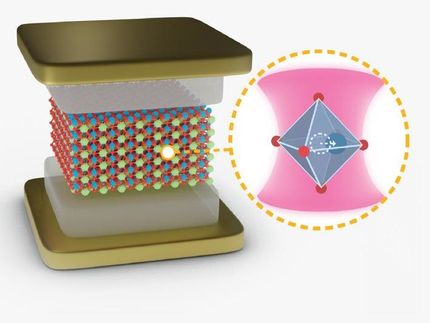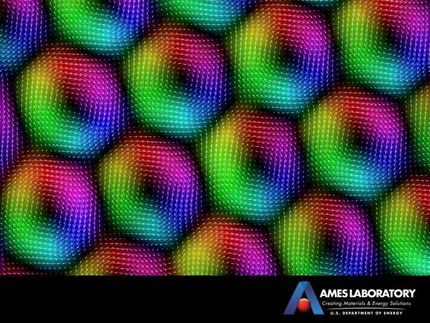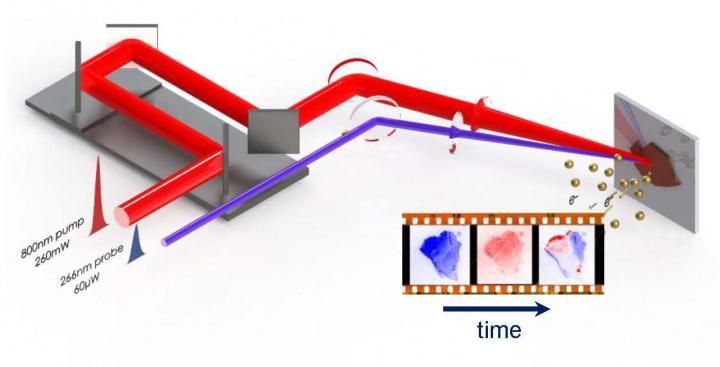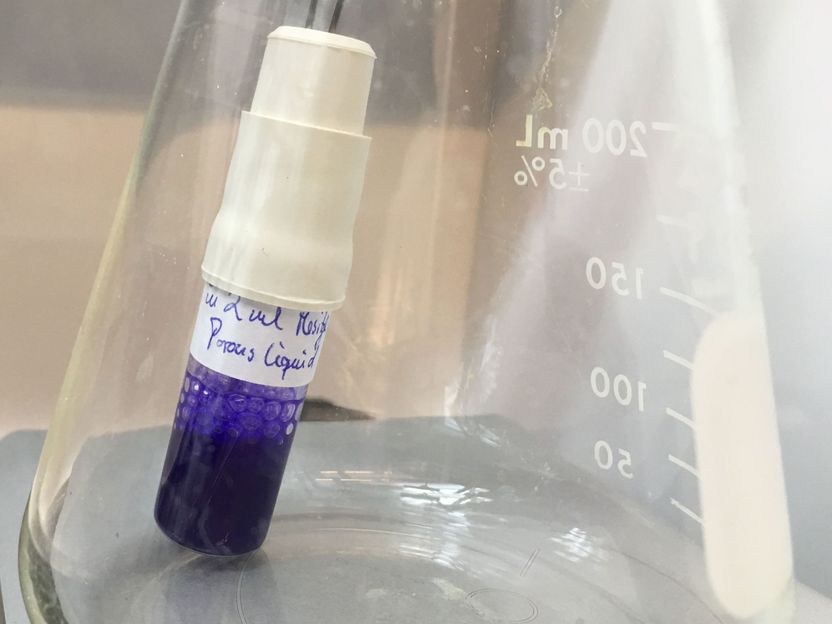Polar vortices observed in ferroelectric
The observation in a ferroelectric material of "polar vortices" that appear to be the electrical cousins of magnetic skyrmions holds intriguing possibilities for advanced electronic devices. These polar vortices, which were theoretically predicted more than a decade ago, could also "rewrite our basic understanding of ferroelectrics" according to the researchers who observed them.
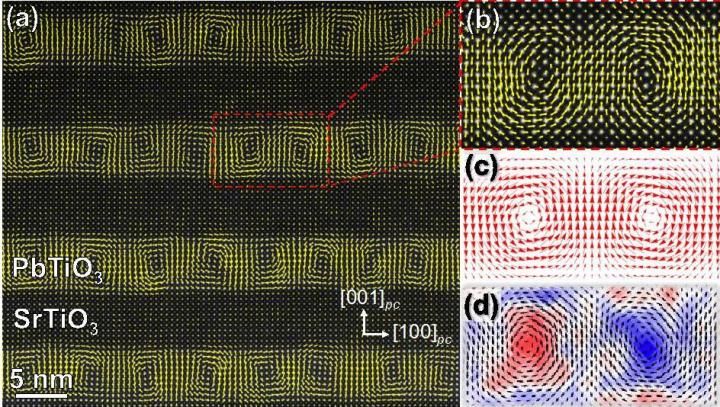
The first ever observations of polar vortices in a ferroelectic material could find potential applications in ultracompact data storage and processing and the production of new states of matter.
Berkeley Lab
A team of scientists with the U.S. Department of Energy (DOE)'s Lawrence Berkeley National Laboratory (Berkeley Lab) and the University of California (UC) Berkeley have recorded the first ever observations of rotating topologies of electrical polarization that are similar to the discrete swirls of magnetism known as "skyrmions." If these smoothly rotating vortex/anti-vortex topologies prove to be electrical skyrmions, they could find potential applications in ultracompact data storage and processing, and could also lead to the production of new states of matter and associated phenomena in ferroic materials.
"It has long been thought that rotating topological structures are confined to magnetic systems and aren't possible in ferroelectric materials, but through the creation of artificial superlattices, we have controlled the various energies of a ferrolectric material to promote competition that lead to such new states of matter and polarization arrangements," says Ramamoorthy Ramesh, Berkeley Lab's Associate Laboratory Director for Energy Technologies and the co-principal investigator for this study. He also holds UC Berkeley's Purnendu Chatterjee Endowed Chair in Energy Technologies.
"Ferroelectric materials such as the materials used in this work
have produced a number of exciting emergent properties over the years, but these smoothly-rotating polar vortex structures really are different," says Lane Martin, a faculty scientist with Berkeley Lab's Materials Sciences Division and Associate Professor in UC Berkeley's Department of Materials Science and Engineering, who is this study's co-principal investigator. "I think if you surveyed the community many would shake their heads in disbelief at such structures, but it turns out there really is a tendency for vortex states to form in nature even in these polar systems. And, when one looks more broadly, vortex structures can occur across huge length scales - from galaxies and weather systems all the way down to 10s of atoms as in our case."
Ramesh and Martin are the corresponding authors of a Nature paper describing this study in detail. The paper is titled "Observation of Polar Vortices in Oxide Superlattices." The lead researchers on this work are Ajay Yadav, Christopher Nelson, and Anoop Damodaran who also hold joint appointments with Berkeley Lab and UC Berkeley. (Full list of authors below.)
Ferroic materials display unique electrical or magnetic properties - or both in the case of multiferroics. For example, the electrical field of a ferroelectric material can be polarized in favor of either a positive or negative charge with the application of an external electrical field. In a ferromagnetic material, the application of an external magnetic field aligns the spin of their charged particles, resulting in the material becoming a permanent magnet. In recent years, it was discovered that the application of an external magnetic field can also produce atom-sized cyclones of skyrmions, which act like baryon particles and can be moved coherently over macroscopic distances. These properties make skyrmions excellent candidates for spintronic applications.
"We believe the polar vortices we observed in ferroelectrics, when fully explored, have the potential to be topological states of matter that are similar to magnetic skyrmions," Ramesh says. "The fact that our polar vortices can display emergent behavior in their electronic, optical, magnetic and other properties suggests that heretofore unexplored applications and functionalities could be possible."
Ramesh, Martin and their collaborators worked with what has become a canonical system in the community, ultrafine layered structures built from lead titanate and strontium titante compounds controlled down to a few unit cells each, in which each unit cell is approximately 0.4 nanometers thick. They created superlattices that harbored a three-way competition between elastic, electrostatic and gradient energies within the layers of lead titanate and strontium titanate. This unique three-way competition gives rise to the polar vortices.
"As we tune the period lengths of our superlattices, we can tune the relative importance of these three energy scales," Martin says. "Although rather exotic things can occur if one changes the superlattice period to be both smaller and bigger than we studied here, we really found the 'sweet-spot' in this work that produced these polar vortices which are an entirely new phenomenon."
A combination of scanning transmission electron microscopy (STEM) and X-ray diffraction studies were used observe and characterize the polar vortices. The STEM work was carried out at Berkeley Lab's Molecular Foundry, a DOE Office of Science User Facility, on TEAM 0.5, the world's most powerful transmission electron microscope. The X-ray diffraction work was carried out at the Advanced Photon Source, another DOE Office of Science User Facility, which is hosted by DOE's Argonne National Laboratory.
"Our study is really indicative of how DOE-funded research programs can bring together a diverse range of expertise, including atomically-controlled materials synthesis and cutting-edge research facilities, and materials theory to enable foundational discoveries that really change the way we think about exotic materials and the possibilities for using them," says Ramesh.
"This is just the beginning for the study of polar vortices in ferroelectric materials," Martin says. "We're observing a new state of matter and we have our work cut out for us in mapping and understanding how it evolves. We can imagine adding a magnetic spin component to similar superlattices and thus potentially paving a pathway to fundamentally demonstrate electric-field control of magnetism."
